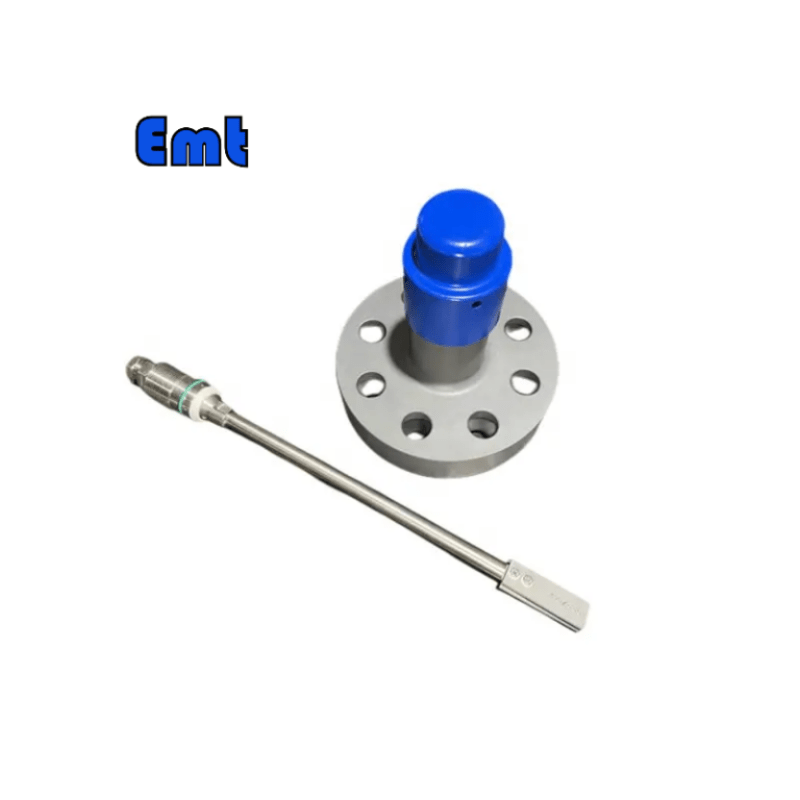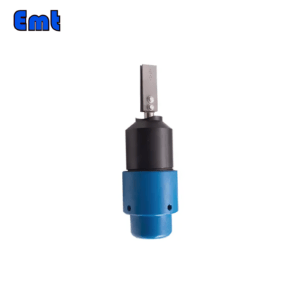Description

Measurement of corrosion coupon rate of hanging piece
Gravimetric method
Due to corrosion, the weight of materials will change systematically, which is the theoretical basis for measuring the corrosion resistance of materials by gravimetry. Although many new corrosion research methods have been developed in recent years, the gravimetric method is still the most basic quantitative evaluation method of corrosion and has been widely used. The gravimetric method is simple and intuitive, suitable for laboratory and field tests. It is divided into the weight gain method and the weightlessness method two.
Weight gain method
When the corrosion products are firmly attached to the sample, almost insoluble in solution, and not contaminated by external substances, then the corrosion damage can be measured by the weight gain method. The weight increment method is suitable for evaluating total corrosion and intergranular corrosion, but not for other types of local corrosion. The test process of the weight gain method is to place the pre-prepared sample size, weigh it, and put it in the corrosive medium. After the test (together with the corrosion products that have fallen off), take it out, dry it, and then weigh it. The total weight gain indicates the degree of corrosion of the material. In gravimetry, a sample usually provides only one data point on the corrosion-time curve. When the corrosion product is firmly attached to the surface of the sample and has a constant composition, the weight gain can be measured continuously or periodically on the same sample, so it is suitable for studying the rule of corrosion velocity change with time.
Weightlessness method
The weightlessness method is a simple and direct method. It does not require the corrosion products to firmly adhere to the surface of the material. The weight loss method directly represents the weight of the material lost due to corrosion, without the chemical composition analysis and conversion of the corrosion products. These advantages of weight loss methods have been widely used. The test process of the weightlessness method is to place the pre-prepared sample size and weight into the corrosive medium, take it out after the test, remove all the corrosion products, and then wash, dry, and weigh it. The weight loss of the sample directly represents the corrosion degree of the material. The solubility of corrosion products is also not considered, since all corrosion products must be removed from the sample at the end of the test.
In the process of pre-test and trial assembly, it is necessary to carefully observe and record all kinds of changes in the material surface and medium before and after removing the products from the ground, regardless of the additive method or the weightlessness method.
Corrosion product removal method
In order to evaluate the corrosion results correctly, the corrosion products on the sample surface must be removed without damaging the metal substrate itself if the weight loss method is used. In fact, it is impossible to damage the substrate completely, only the damage on the corrosion results can be no obvious effect. Different methods of removing corrosion products should be adopted for different metal materials and different corrosion products. Generally, there are mechanical methods, chemical methods, and electrolysis methods three.
The mechanical method is generally washed with running water, scrubbed with a rubber or stiff brush, or scraped with a wooden scraper or plastic scraper. Most loose corrosion products can be cleaned by this method. However, further chemical or electrochemical methods are needed to completely remove the corrosion products in order to accurately test or check the local corrosion condition.
Chemical method
The corrosion products on the surface of the sample were removed by dissolution by selecting a suitable chemical solution and operating conditions. In order to protect the metal matrix, retarding reagents are often added to the chemical cleaning solution. Table 1 lists some common chemical methods for removing corrosion products. These methods are not complicated, but in use may damage the substrate, resulting in test errors; Therefore, blank samples of the same material with the same size that have not been corroded should be cleaned under the same conditions at the same time as cleaning, so as to obtain their weight loss. Then the weight loss of the actual sample is subtracted from the number of times to obtain a more accurate weight loss.
Electrochemical method Selecting appropriate anode and electrolyte, taking the sample as cathode, and applying direct current electrolysis method. During electrolysis, hydrogen gas is produced by the cathode. Under the mechanical action of hydrogen bubbles, the corrosion products are peeled off. The remaining loose material can be washed away by mechanical method. The effect of this method is good and the weight loss of the blank sample is small. An example of electrolytic operating conditions applicable to many gold wind materials is as follows: electrolyte is 5%H, SO, the anode is carbon rod, order electrode current density is 20 Alm2, organic retarding reagent (heading) is added, 2ml/L, the temperature is 75℃, exposure time is 3min.

Data processing
Tabulate experimental data.
Data processing was carried out in detail to obtain the test results, and the corrosion rate of each sample was calculated. The corrosion rate of three different samples under the same conditions was averaged.
Analyze the test results and discuss the influence of temperature and concentration on corrosion rate.
The changes in material surface and medium before and after corrosion are analyzed in detail.
Matters needing attention
In accordance with the experimental requirements, strictly carry out the hanging treatment.
Record the status of each link of the hanging piece in detail.
Precautions of electronic balance, correct use of electronic balance.

corrosion coupon





Reviews
There are no reviews yet.